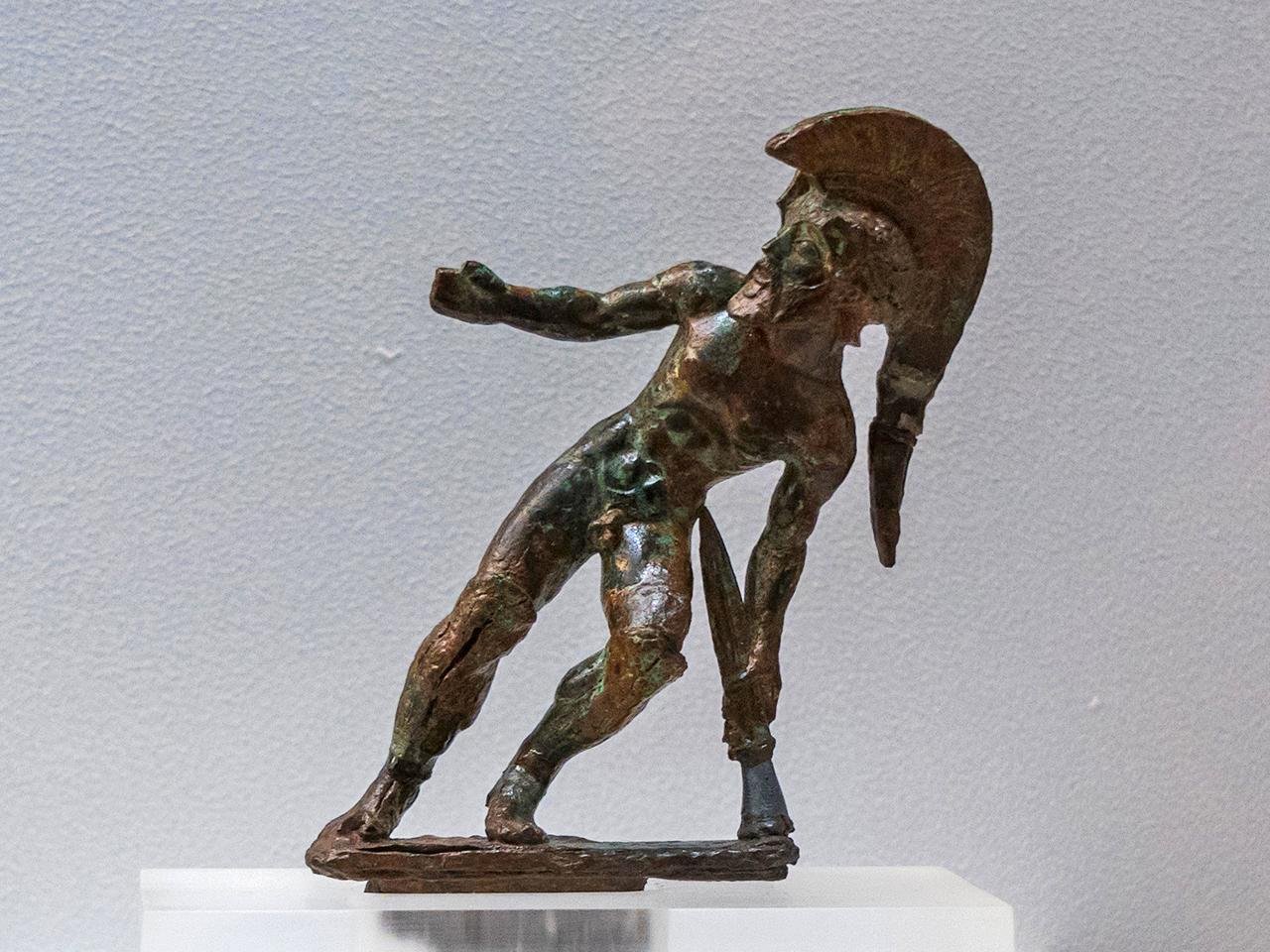Greek archaeologists investigating Salamis, a small island east of Athens, have discovered a large public building and extensive collection of marble treasures that they say is key to understanding the history of the ancient city.
 The figure of Ajax committing suicide. Credit: Egisto Sani, Flickr
The figure of Ajax committing suicide. Credit: Egisto Sani, Flickr
Salamis, famed for its pivotal role in the Persian Wars against the Achaemenid Empire from 499 to 449 BCE, has now revealed an extensive submerged complex that sheds light on its classical past.
Salamis was catapulted into historical significance during the second Persian invasion in 480 BCE, marked by the decisive Battle of Salamis where the Greek navy triumphed over Xerxes the Great. By the second century CE, the once-thriving city had fallen into disrepair, as noted by Greek geographer Pausanias, who documented the remnants of a marketplace and a temple of Ajax, the legendary Trojan War hero and a native of Salamis.
Archaeologists, engaged in probing the submerged remnants of Salamis, made headlines in 2021 with the discovery of the city’s seawall, a crucial element of its ancient fortifications. The recent revelation, unveiled by the Greek Ministry of Culture, centers around a colossal building identified as a stoa—an expansive covered walkway commonly encircling open public spaces like markets or squares. This stoa, measuring approximately 20 feet in width and 105 feet in length, harbors six or seven rooms, one of which contains a substantial storage pit.
Artifacts found within the stoa range from pottery of diverse periods, potentially carried in by the sea, to classical remnants dating back to the fourth century BCE. The treasures within the stoa include amphora stoppers, bronze coins, and fragments of marble objects.
Particularly intriguing is the upper portion of a marble stele, featuring a depiction of a standing, bearded man being crowned—an image echoing the heroic stature of Ajax. The scene on the stele mirrors a relief representation found in the Archaeological Museum of Salamis, dating to around 320 BCE, further connecting the submerged building to the city’s illustrious past.
“The identification of the stoa is a very important new element for the study of the topography and residential organization of the ancient city,” emphasizes the Greek Ministry of Culture, drawing parallels between the contemporary findings and Pausanias’s observations nearly two millennia ago.
The underwater excavation project, initiated in 2022 by a team of 12 archaeologists, delves into Salamis’s sunken heritage. Salamis, famed for its mention in Homer’s Iliad as the home of Ajax, has become a focal point for marine archaeologists seeking to unravel the mysteries concealed beneath the waves.





